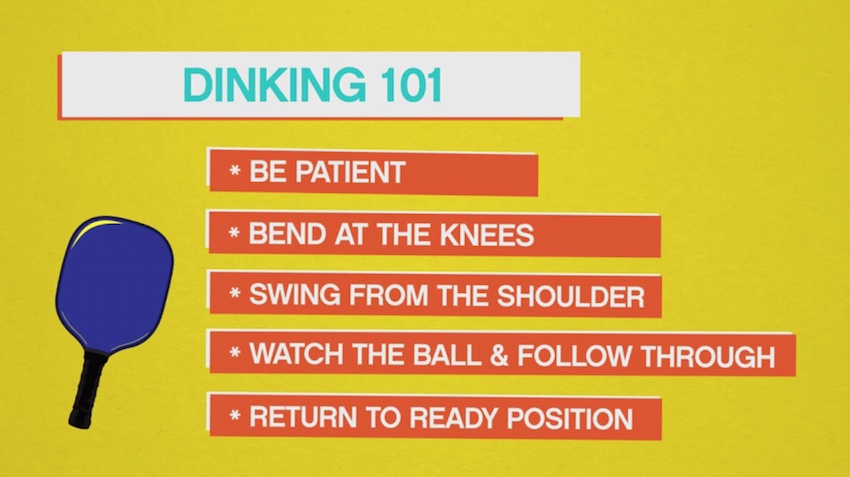There I was playing a game of doubles the other day. My partner and I were matched against a team that I thought was somewhat more skilled than we were. I knew we would have our work cut out for us if we were to win.
I am not that confident in my third shot drop shot or any drop shot for that matter. I can generally hit a successful drop shot about 70% of the time. I really need to work on this and get it up to 90% plus, but then again that would take practice; ugh!
So there we were playing against two people who were very good at the net. My usual attempt to use a third shot drive or other hard drives to get the ball by them was not working consistently. They were either whacking the ball back hard or dropping it short and making us really work hard to move forward and hit a shot.
We were behind, but not by that much so I decided to start using drop shots into the kitchen area. My dink game is pretty good and I don’t lose too many dink points. I thought, “After all, what have I got to lose if other shots aren’t working.?”
Much to my surprise, this became an effective strategy. I was aiming primarily for the backhands of the opponents and every once in a while, down the middle. Sprinkle in my partner’s effective lob every now and then and the game was very close.
Lucky for us we were able to win although barely.
Here’s the point:
This was recreation play and not a tournament. Winning or losing didn’t mean as much to me as did making a good show. The one strategy I generally like to use, i.e. hitting hard drives, was not working.
Changing strategies to the softer game via drop shots turned out to be a better choice. Let’s say that we continued to lose points and ended up losing. It still would have been a good chance for me to get experience with the softer part of the game.
Keeping the ball low in pickleball is the key to winning points. A low ball is hard to attack and often results in a weak return. Of course, we need to be good at the soft game as well to take advantage of this situation.
Don’t be afraid to change strategies if what you are doing is not working.
A FINAL NOTE – I often talk to my partner during the game to share ideas, strategies, etc. This keeps everyone on the same page.
What are your thoughts?
More Pickleball Videos and Information
To See additional Pickleball Videos & Information Click Here (primarily for beginners and less experienced players)
Check out Additional Pickleball Information and Videos! (for all players including average to more experienced players)
**********
All original content on this blog is copyrighted by Jeffrey B. Ross with ALL Rights Reserved. While reference links back to JBRish.com are appreciated and encouraged, please acquire approval for any reproduction of original content from this website.
©Jeffrey B. Ross 2014 – 2018 – JBRish.com
